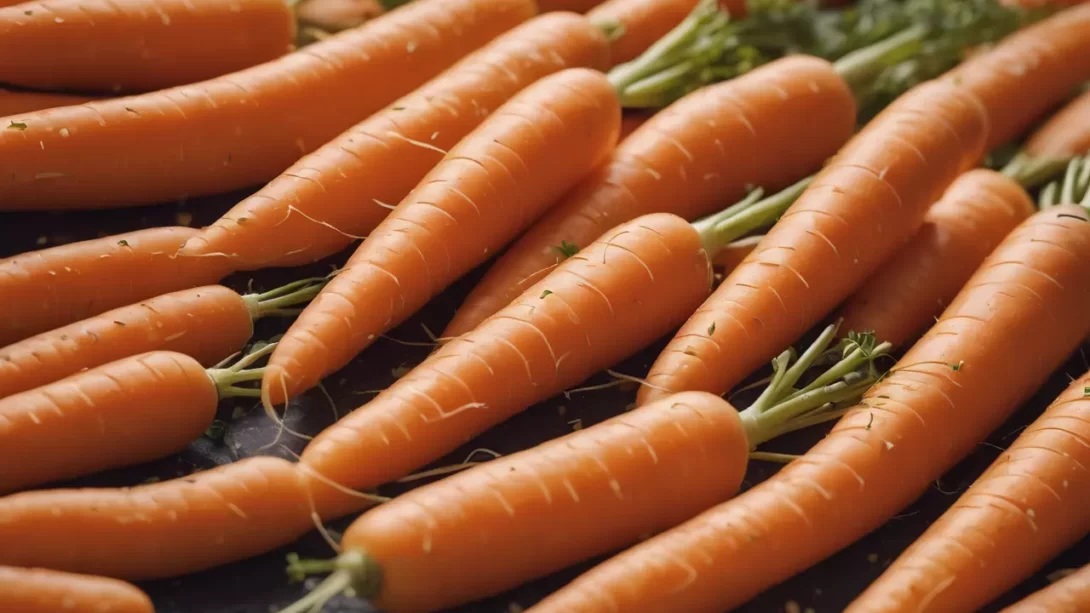Cleaning carrots is an essential step in food preparation, ensuring they are not only safe to eat but also taste their best. By removing dirt and contaminants from the surface, you can enjoy the natural sweetness and crispness of carrots. In this simple guide, we will walk you through the steps of cleaning carrots, from gathering the necessary tools and materials to the final rinsing and preparation. With these tips, you’ll be well-equipped to enhance your culinary experience with fresh, clean carrots.
- Organic
- Fresh and Healthy
Tools and Materials
Before diving into the carrot cleaning process, it’s important to gather the right tools and materials. You will need a vegetable brush, which is designed to remove dirt and debris without damaging the carrot’s skin. A sharp knife and a clean cutting board are also essential for trimming and cutting the carrots to your desired size and shape. And, of course, clean water is a crucial component of the cleaning process to ensure the carrots are thoroughly rinsed. By having these items on hand, you’ll be ready to clean your carrots effectively.
Preparation
Proper preparation is key to ensuring a safe and thorough carrot cleaning process. Start by washing your hands thoroughly with soap and water before handling any food, including carrots. This helps prevent the transfer of contaminants to the carrots. Next, set up a clean work area by wiping down your kitchen counter or cutting board with a mild disinfectant. Having a clean and sanitized work area is essential for maintaining the cleanliness of the carrots throughout the process. By taking these initial steps, you create a foundation for safe and effective carrot cleaning.
Scrubbing Carrots
To effectively clean carrots, the next step is scrubbing. Begin by using a vegetable brush, which is specially designed to clean produce. Hold the carrot under running water and gently but thoroughly scrub the entire surface. Pay close attention to any crevices or areas where dirt may be trapped. The goal is to remove all visible soil and debris. By using a vegetable brush and being diligent in your scrubbing, you’ll ensure that your carrots are clean and safe to eat. Remember, the cleaner the carrot, the better it will taste in your dishes.
Trimming and Cutting
After scrubbing, it’s time to trim and cut the carrots to your desired size and shape. Using a sharp knife and a clean cutting board, trim the tops and tails of the carrots. This step not only removes any remaining dirt but also prepares the carrots for various culinary uses. You can cut them into rounds, sticks, or any shape that your recipe requires. Be sure to exercise caution while using the knife to prevent any accidents. With your carrots properly trimmed and cut, they are ready to add a burst of fresh flavor and nutrition to your favorite dishes.
Rinsing and Final Check
Once you’ve scrubbed, trimmed, and cut your carrots, it’s time for a final rinse. Rinse them thoroughly under clean, running water, ensuring that all traces of dirt or soap residue are removed. This step is vital to guarantee that your carrots are free from any contaminants. After the rinse, take a moment for a final visual check. Inspect the carrots to make sure they are clean and ready for your culinary creations. With this last step, you can be confident that your carrots are safe and appealing.
Storing Clean Carrots
To keep your clean carrots fresh and crisp, it’s essential to store them properly. Place them in a perforated plastic bag or a container with a lid in the refrigerator. The perforations allow for air circulation, preventing moisture buildup that can cause the carrots to become limp. Keeping them in the vegetable crisper drawer is ideal, as it provides the right level of humidity. Stored this way, your clean carrots can stay fresh for an extended period, ready for snacking or use in your favorite recipes.
Conclusion
Cleaning carrots is a straightforward yet crucial step in food preparation. By following these steps – from gathering the right tools and materials to a final rinse and storage – you can ensure that your carrots are not only safe to eat but also enhance the flavors and textures of your dishes. Clean carrots are the foundation of delicious and nutritious meals. Whether you’re making a fresh salad, a hearty stew, or a savory side dish, your well-cleaned carrots are ready to shine in your culinary creations.





